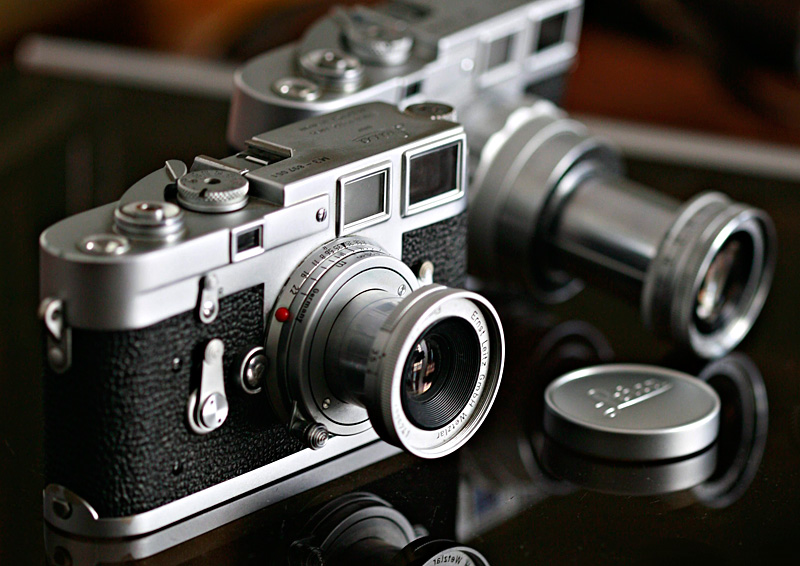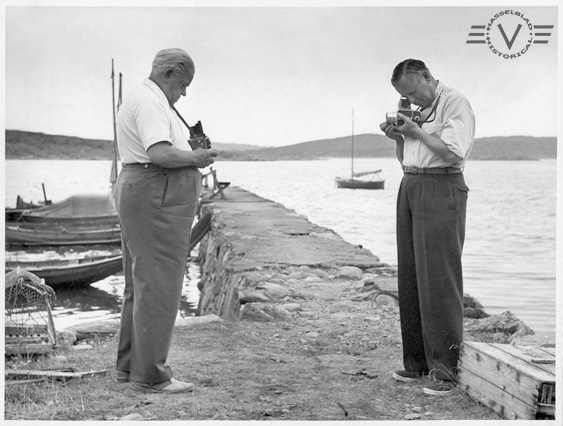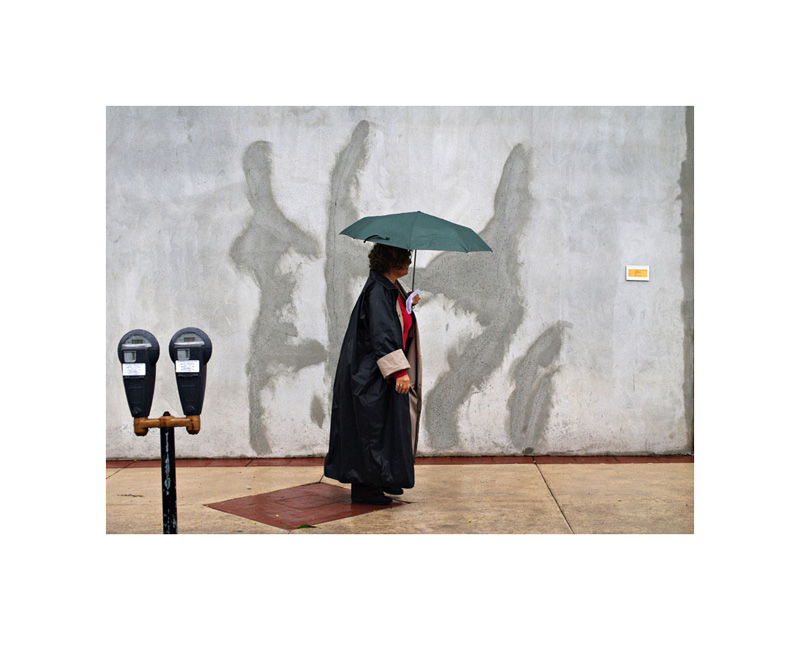In the comments to Ken's nifty post below about the Olympus Pen, a reader named Antony Sheperd asked, parenthetically, "how many camera designers can people name? I can think of Barnack and Maitani."
Barnack...that got me to thinking. Barnack is well known, and always gets the credit for the Leica. Rightly so, of course. But no one ever mentions Willi Stein.
Barnack's line of Leicas was long-lasting and had many offshoots, ending with the magnificent IIIg (designed by Adam Wagner) which stayed in production until 1960 and has never been anything but prized.
So who was Willi Stein? He was the designer of the M3. To be more precise, Stein designed the camera; he and Ludwig Leitz designed the rangefinder; Heinrich Schneider and Willi Keiner engineered the finder optics; and Hugo Wehrenfennig was responsible for the M bayonet. (This information comes from Erwin Puts.)
The M3 was the noble progenitor of most of the Leica M rangefinders that came after it, with the exception of the M5 and the CL, or "compact Leica," which spun off the mysterious probably-Japanese, maybe-a-little-bit-German CLE (compact Leica electronic). I don't know who was responsible for the M5 (I'm sure I'm about to find out), but Stein designed the CL too. Willi Stein's M3 design is still very much in evidence in the M8 and the new M9. They are very different cameras, of course, but they pay homage every which way to Herr Stein's design. His line of Leicas has lasted longer even than Barnack's. They've been around for more than 55 years now.
And apart from that, the M3 has only the classic folding wooden-and-brass field view camera to compete with it for the title of the prettiest camera ever made. And quite possibly the title of most significant, too.
Let's not forget Herr Barnack. But when the subject of camera designers comes up, perhaps we should spare a thought for the oft-overlooked Willi Stein once in a while, too.
Featured Comment by Marc Rochkind: "And, of course, Masahiko Fuketa, designer of the Nikon F."
Featured Comment by Chris Lucianu: "What about the most obvious name: Victor Hasselblad? By the way, this page shows Victor Hasselblad and Reinhold Heidecke (of Franke & Heidecke, makers of the legendary Rollei) taking pictures of each other."
Reinhold Heidecke and Victor Hasselblad taking pictures of each other, from hasselbladhistorical.eu
Featured Comment by Eamon Hickey: "Lots of really significant camera and lens designers aren't well known to the public because, beginning in the 1950s especially, so many of them were Japanese. And aside from Olympus's promotion of Maitani, the Japanese optics and camera companies generally follow traditional Japanese cultural norms and do not single individuals out for special recognition.
"One such person who, if he were German or American, would be known worldwide is Nikon's Zenji Wakimoto, who has to rank as one of history's great lens designers. (A Google search will turn up a little bit of info about him.) He was the lead designer on many of Nikon's most famous camera lenses from the 1950s and 1960s, but he also designed the Ultra Micro-Nikkors of the 1960s and '70s, which were industrial process lenses that were the highest resolution lenses ever made at that time.
"The Ultra Micro Nikkors evolved into today's lenses for steppers, which are without question the highest precision optics ever put into regular production. A modern top-end stepper lens can resolve a line about 1/1000th the width of a human hair; they can weigh a ton or more and can be 5 ft. long by 2 ft. in diameter, and cost several million dollars apiece."
Featured Comment by David Goldenberg: "A remarkable camera designer who hasn't been mentioned here so far is Emanuel Goldberg (no relation, so far as I know). Goldberg was the head of Zeiss Ikon in the early 1930s, before escaping from the Nazis and making his way to what was then Palestine. At Zeiss Ikon, he designed the original Contax, elements of which were copied in the Nikon rangefinder cameras of the 1950s, and eventually wound up in the Nikon F (such as the removable back).
"But, the Contax was only a very small part of his career. He worked on sensitometry and aspects of cinematography, including sound tracks.
"One of the most interesting things that he did was to devise, in the 1931, a scheme for indexing microfilm data with marks on the film edges that could be read by a photosensor. This may have been the earliest implementation of electronic indexing. In 1945, the American scientist Vanevar Bush published a very influential article, entitled 'How we may think,' that described a very similar, but hypothetical, data retrieval machine, which many people consider the conceptual ancestor of hypertext. But, Goldberg's much earlier version has never received much attention.
"Information about Goldberg can be found at a web page maintained by Michael Buckland, who has studied his work and written a book about it."





